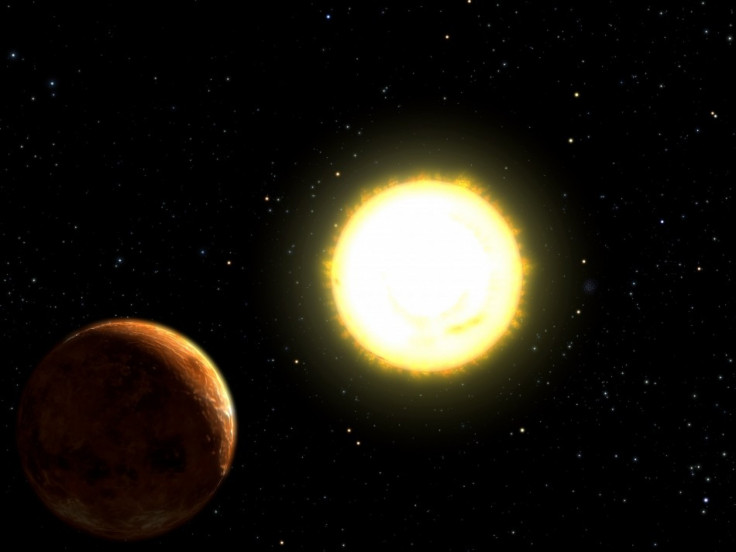Kepler Finds Bizarre Systems

Among the new solar systems discovered by the Kepler spacecraft are planets that share orbits, one with resonances that keep the planets from scattering away or falling into the parent star, and one with worlds so tightly packed that the closest orbits its star in a single day.
The Kepler Space Telescope observes stars to see if they show a planetary body transiting in front of them. Thus far it has discovered more than 1,200 planets and candidates. It has found the first evidence of a rocky body, and seen the first multi-planet systems.
A recent look at the data has found one system that could have two planets in the same orbit. A second system has a group of planets in resonance, and the third has planets that all orbit their star in less than a week.
Jack Lissauer, a co-investigator for the Kepler mission at NASA's Ames Research Center, said the first system, called KOI 730, looks like it has two planets out of the four orbiting the parent star in just under 10 days, sharing the same orbit. (KOI stands for Kepler Object of Interest).
The planets would be in what is called a Trojan configuration, orbiting 60 degrees in front of and behind another body. There are examples of it from our own solar system: Jupiter has a group of asteroids that leads and trails the planet in just that way. The point 60 degrees leading and trailing a given planet makes an equilateral triangle with the parent star, and creates a point of stability.
Since he published his findings, Lissauer says, he is more skeptical of that interpretation. But even if the Trojan hypothesis is wrong, it might be something just as interesting: planets in resonance with each other. Such configurations are rare, but they are stable, persisting for billions of years. In this case, the four bodies around KOI 730 would have orbits in the resonances 8:6:4:3. That means there are two pairs of planets, and each time the first member of the pair makes three orbits another planet completes four.
The second system, KOI 191, has four planets. Early calculations, Lissauer says, show the system isn't stable. That means there are likely planets in resonances that keep them in their places. There are probably some eccentricities involved, he said. Orbits that cross, but maybe don't come close.
In a solar system in which orbits cross each other, resonances can keep the planets in stable tracks around their stars. Neptune and Pluto, for example, are in a resonance which keeps the planets the same distance from each other every time they are closest to each other. Pluto's orbit is also steeply inclined relative to Neptune's. So even though Pluto crosses Neptune's orbit -- it was closer to the sun between 1979 and 1999 -- it will not be captured by or collide with the larger planet for at least many millions of years.
KOI 191 is one of the first Kepler found that had multiple planets in it. One of them is about Uranus- or Neptune-sized. Lissauer posits an upper limit of about 17 times the mass of Earth, though that is subject to revision as more measurements are made.
Lissauer says a third system, KOI 500, is one of the most interesting because the planets so closely orbit the parent star. There are five of them, with periods that range from just under a single day to 9.5 days. It resembles Jupiter's system of moons in that regard. Jupiter's three largest inner moons orbit the planet orbit in 1:2:4 resonance, with periods of 1.77, 3.55 and 7.16 days, respectively. KOI 500's planets may have similar characteristics.
If confirmed, the planets around KOI 500 will be in some of the smallest orbits around their star yet found, and the innermost would be bathed in heat from even a relatively cool star. A planet in our own system that orbited the Sun so fast would be only 2 million kilometers from its center -- only a few solar radii from the surface -- and the temperature would be measured in the thousands of degrees Celsius. Standing on the night side of the planet would offer a spectacular view of the other three worlds in the system, as they would all be close enough to show small discs even if they were only the size of Earth.
To contact the reporter responsible for this story call (646) 461 6917 or email j.emspak @ ibtimes.com.
© Copyright IBTimes 2024. All rights reserved.




















